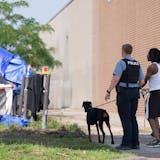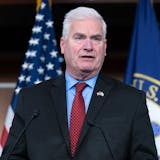Minnesota's two largest urban counties saw striking population declines in 2021 after a decade of growth, according to new U.S. census data, likely due to COVID-19 pandemic disruptions which upended college plans and accelerated retirements.
Hennepin County's population, which includes Minneapolis, dropped by nearly 13,900 last year and Ramsey County, which includes St. Paul, declined by 8,200 people, according to new census estimates released Thursday. In contrast, five suburban counties — Anoka, Carver, Dakota, Washington and Scott — experienced modest population growth ranging from 1,300 in Carver County to 4,100 in Washington County.
State demographer Susan Brower said it's still too early to say if this is a one-year blip or the leading edge of a trend. Brower said it's also too soon to say if other factors, including more flexible work-from-home arrangements and concerns about social unrest and crime in the Twin Cities contributed to the decline.
"This is the first time in recent years we've ever seen Hennepin County decline in these estimates," Brower said. "Not only did it decline, but it declined by nearly 14,000 people. That is considerable."
Brower said she believes the 2021 data most likely reflects how the pandemic affected the migration of society's most mobile population, young adults as well as those in the sunset of their careers.
"College students who otherwise would have moved to the Twin Cities to go to school deferred. Students who were in school here in the Twin Cities moved back home," Brower said. "We also know people retired earlier than they otherwise would have in their older ages. We may have seen some of that movement up to the lake sooner than we would have otherwise."
She said well-established trends such as declining birth rates, an aging population and decreasing immigration became even more pronounced during the pandemic.
"International immigration is another piece of this as well," Brower said. "It's been slowing down over the last few years. It was especially slow during the pandemic as everyone sort of stayed put."



